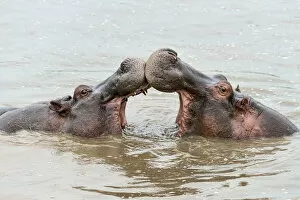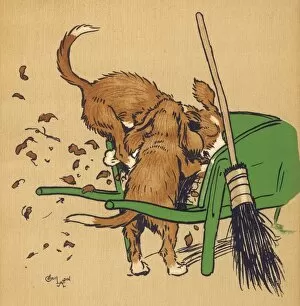Quarreling Collection (#2)
"Quarreling: A Universal Language of Conflict and Emotion" From the bustling bathhouses of Japan to the elegant courts of Europe
For sale as Licensed Images
Choose your image, Select your licence and Download the media
"Quarreling: A Universal Language of Conflict and Emotion" From the bustling bathhouses of Japan to the elegant courts of Europe, it has long been a subject that captivates artists and historians alike. In Yoshiiku's vivid depiction, women scuffle amidst steamy waters, their animated gestures revealing the intensity of their disagreement. Meanwhile, Lucas Cranach the Elder transports us to The Silver Age, where even gods are not immune to discord. Traveling further back in time, we encounter a lesser-known scene from South Africa in 1888. Nurseboys engage in a heated argument at Durban, highlighting how conflicts can arise even among those tasked with providing care and healing. Ermengarde's portrait reminds us that quarrels have permeated history for centuries - her regal appearance contrasting with her father's nickname as "the Quarreler. " Moving eastward to Japan once again, Hokusai captures Chinese and Tartar boys locked in dispute over a game of Go. This snapshot reveals how cultural differences can fuel disagreements while reminding us that children too are prone to squabbles regardless of time or place. The theatrical realm also embraces quarrels as Act Three unfolds on stage during Chushingura (Treasury of the Forty-seven. . C). Here we witness characters embroiled in an intense conflict - their emotions laid bare for all to see. Stepping away from historical events and into everyday life, Thomas Rowlandson presents "Reading the Will. " Amidst inheritance disputes and hidden agendas lies yet another example of human nature's inclination towards bickering. Artistic interpretations continue with "The Conversation, " where brushstrokes capture tense exchanges between individuals engaged in passionate debate. Similarly, "Discussing the News: The Argument" portrays lively conversations fueled by differing opinions - a reminder that discourse is essential for progress. Finally, an early 18th-century engraving titled "Good and Bad Children" serves as a cautionary tale.











